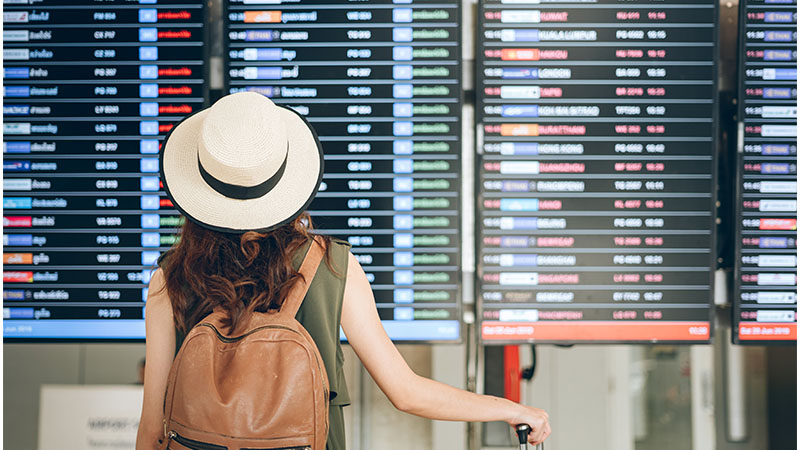How To Reach Chinese Millennials

Exporting to China: the millennial factor
In the 1980s, China took some very big, bold decisions. The one-child policy slowed the country’s dangerous overpopulation, but changed its culture forever. Furthermore, the economic liberalization that started with the rise of Deng Xiaoping created unprecedented levels of wealth in a country that was largely unaccustomed to it. This combination of circumstances produced a uniquely affluent and individualistic generation - and lots of opportunities for international brands exporting to China.According to a report by Fung Business Intelligence, most people in this so-called ‘privileged generation’ are only children in an often relatively wealthy family. For many this means, in stark contrast to their European and American contemporaries, no student debt and no crippling accommodation costs.
So, many Chinese millennials (born between 1981 and 1996) have money to spend. And they are helping China to grow its e-commerce market by a projected 12.23% per year, between 2023 and 2027, with fashion items and consumer electronics dominating their shopping lists.
So, how can global brands exporting to China reach them? Here are some things to think about when targeting this growing, affluent and influential group.

You can find them online
In January 2022, there were 1.02 billion internet users in China, and those between the ages of 30 and 39 make up the largest proportion of these at 20.3%1. So if you’re an e-marketer looking to reach millennials, trading with China is a great strategy.
They dominate China’s social platforms
WeChat and Weibo, China’s leading social platforms, are dominated by millennials. Douyin (the Chinese version of TikTok) is also a great channel on which to engage with audiences and build a loyal following (around 80% of Douyin users are aged between 18 and 452).
Because of their continual presence on social channels, when Chinese millennials are enthusiastic about something, it spreads quickly.
They’re driving Chinese e-commerce
In 2023, 25 to 44-year-olds (millennials are now 27 to 42) account for 55.8% of e-commerce users in China3 – so considerably over half. Popular e-commerce platforms include Tmall and JD.com, while at the luxury end of the scale are Tmall Luxury Pavilion, on which Farfetch China launched in 2021.
Live streaming is a big part of Chinese e-commerce culture. It involves live streaming video content on social media platforms such as Douyin and the RED (similar to Instagram). An influencer or seller showcases a product and interacts with viewers in real-time and viewers can purchase the product directly through the live stream. Douyin’s version, Douyin Shopping, has become a major channel for e-commerce sales.
Their preferences are evolving
A 2017 HSBC survey found that 70% of millennials aged 19 to 36 in China are homeowners – the highest rate among the nine countries surveyed, including the US (35%) and UK (31%). Homeowners are more likely to buy for the home than renters, so if you’re marketing homeware and decorative items, this is a very good place to look for customers.
Millennials in China are discerning and demanding, valuing authenticity and uniqueness. Their curiosity has led to booming cross-border retail e-commerce sales. Foreign brands exporting to China should note the most popular product categories: personal care and beauty, apparel and accessories, electronics and gadgets, food and beverages, and baby and children’s products.
As a general trend, sales of luxury goods have tripled in China over the last decade or so, although this has slowed a little post-COVID. The pandemic has brought an increased focus on health and wellness among Chinese consumers which has also affected shopping preferences, leading to a growing demand for products such as health supplements, fitness equipment, and natural and organic food products. On the other hand, a once burgeoning wine consumption in China has been dropping by roughly 260 million bottles a year since 2018 and this has been further depressed by the numerous COVD lockdowns.
Just as with younger people all over the planet, corporate social responsibility is required of every brand millennials are likely to approve – and, for some of them, the pandemic has brought a more extreme change of values, as shown in the ‘lying flat’ or tang ping movement4.

They travel extensively
According to an October 2016 study for Airbnb, 93% of millennials in China consider traveling an important part of their identity. In fact, they ranked travel at number one; above paying off debt, investing, saving, or buying a home or car.
Further research by Kantar TNS shows that, as well as travel, Chinese millennials also value individuality, immediate gratification, novel experiences and self-expression. This is the definition of open-mindedness, so if you’re selling global culture, China is buying.
They spend on Singles' Day
China’s Singles' Day falls on November 11 (11/11) – so is also known as Double 11. It’s the biggest online shopping event in the world, usually overshadowing Black Friday and Cyber Monday combined. For example, in 2021, shoppers spent a record of more than 952 billion yuan ($134 billion)5. So it’s a great time of year to target China’s largest proportion of online shoppers: millennials.
China trading: important local holidays
- Singles Day - 11 November
- Chinese New Year - 10 February 2024
- Mid-Autumn Festival - 29 September 2023
- Dragon Boat Festival - 10 June 2024
They have high expectations
International brands trading with China should be aware of Chinese consumers' expectations when buying luxury items. Exclusivity, collaborations with local celebrities and influencers, personalized recommendations, VIP access, and a seamless shopping experience are all highly valued – as of course, is convenient, fast and reliable shipping with a trusted logistics partner such as DHL.
DHL DTP (Duties & Tax Paid) is available through DHL’s Trade Automation Service - it is designed to help cross-border sellers ship products to China in a way that’s convenient for Chinese consumers. The seller pays the import duties, taxes, and other fees associated with shipping the product, so the recipient has no additional costs or fees. By offering DHL DTP, international sellers can provide a seamless, hassle-free shopping experience, which can increase customer satisfaction and loyalty.
How long can this growth continue?
Lastly, it’s worth asking ‘is this sustainable’? Although the Chinese economy has experienced uncertainty in recent years – and has become more inward-facing since the trade war with the US – the country’s leadership is motivated to keep it growing. Chinese spending power continues to grow, and China’s love of foreign brands shows no sign of abating. So if you’re wondering whether to reach out to Chinese millennials, the answer is a resounding ‘yes’.
Exporting to China: a final tip
Businesses wishing to trade with China should remember it's a huge country, with extreme regional and cultural variations. There is no “one-size-fits-all” approach; rather, brands should do their research and ensure their marketing is always tailored per the specific customer group they’re targeting. Check out our dedicated China Country Guide for more insights!


